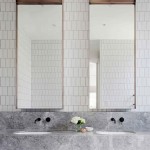How Mirror Therapy Works
Mirror therapy is a rehabilitation technique that utilizes a mirror to create a reflective illusion of movement in a paralyzed or weakened limb. This visual feedback can trick the brain into believing the affected limb is moving normally, which can help alleviate pain and improve motor function. It is commonly used for conditions such as stroke, phantom limb pain, complex regional pain syndrome (CRPS), and other neurological conditions affecting limb movement.
The Visual Illusion and the Brain
The core principle of mirror therapy lies in the brain's interpretation of visual input. By placing a mirror strategically between the affected and unaffected limbs, the reflection of the moving healthy limb creates a visual illusion of the impaired limb mirroring the movement. This visual input overrides the lack of proprioceptive feedback (the body's sense of its own position and movement) from the affected limb, essentially "fooling" the brain into perceiving movement where there is none or limited movement.
Neuroplasticity: The Key to Recovery
Mirror therapy harnesses the brain's remarkable capacity for neuroplasticity – its ability to reorganize itself by forming new neural connections throughout life. The visual illusion of movement stimulates the motor cortex, the brain region responsible for planning and executing voluntary movements. This stimulation encourages the brain to reactivate neural pathways associated with the affected limb, promoting functional recovery. It can also help strengthen the connections between the brain and the muscles in the affected limb, improving motor control and coordination.
Pain Reduction Mechanisms
The pain-relieving effects of mirror therapy are multifaceted and not fully understood. One theory suggests that the visual illusion of movement reduces the mismatch between the intended movement and the actual sensory feedback (or lack thereof) from the affected limb. This reduction in sensory conflict can help alleviate pain. Another theory proposes that mirror therapy activates areas of the brain involved in pain processing, such as the anterior cingulate cortex and the insula, modulating pain perception.
Practical Application of Mirror Therapy
Mirror therapy is typically performed under the guidance of a qualified therapist. The therapist will position the mirror in a way that allows the patient to see the reflection of their healthy limb while concealing the affected limb. The patient then performs simple, repetitive movements with the healthy limb, focusing on the mirrored image as if it were the affected limb moving. The type and complexity of the exercises are tailored to the individual's specific condition and functional limitations. The sessions can last from a few minutes to half an hour and are usually conducted several times a day.
Conditions Treated with Mirror Therapy
Mirror therapy has shown promise in treating a range of conditions. Stroke rehabilitation often incorporates mirror therapy to improve upper limb function and reduce post-stroke pain. It is also used for managing phantom limb pain, a chronic pain condition experienced by amputees in the missing limb. Individuals with complex regional pain syndrome (CRPS), a chronic pain condition characterized by severe pain, swelling, and changes in skin temperature, can also benefit from mirror therapy to improve limb mobility and reduce pain.
Potential Benefits and Limitations
Studies have demonstrated the potential benefits of mirror therapy in improving motor function, reducing pain, and increasing range of motion in affected limbs. However, it's crucial to understand that mirror therapy is not a standalone treatment. It's most effective when integrated into a comprehensive rehabilitation program that may include other therapies such as physical therapy, occupational therapy, and medication. Additionally, mirror therapy might not be suitable for everyone. Individuals with certain visual impairments or cognitive deficits might find it difficult to engage in mirror therapy effectively.
Future Directions in Mirror Therapy Research
Ongoing research continues to explore the mechanisms underlying mirror therapy's efficacy and to refine its application for various conditions. Studies are investigating the use of virtual reality and augmented reality technologies to enhance mirror therapy by creating more immersive and interactive experiences. Researchers are also exploring the potential benefits of combining mirror therapy with other interventions, such as brain stimulation techniques, to maximize therapeutic outcomes.

Fooling The Brain Pain Role Of Mirror Therapy And Modern Uses In Virtual Reality Frontiers For Young Minds

Mirror Therapy For Stroke Patients How To Improve Mobility
Mirror Therapy For Chronic Pain The Hand Society

Fooling The Brain Pain Role Of Mirror Therapy And Modern Uses In Virtual Reality Frontiers For Young Minds

Living Well Mirror Therapy Effective Pain Management For Amputees Jefferson Health

Stroke Exercises Using Mirror Therapy And Neurons

Mirror Therapy Amputee Coalition
A Psychologist Charges 500 For Mirror Therapy How It Works

Mirror Therapy Exercises For Stroke Recovery

Fooling The Brain Pain Role Of Mirror Therapy And Modern Uses In Virtual Reality Frontiers For Young Minds








